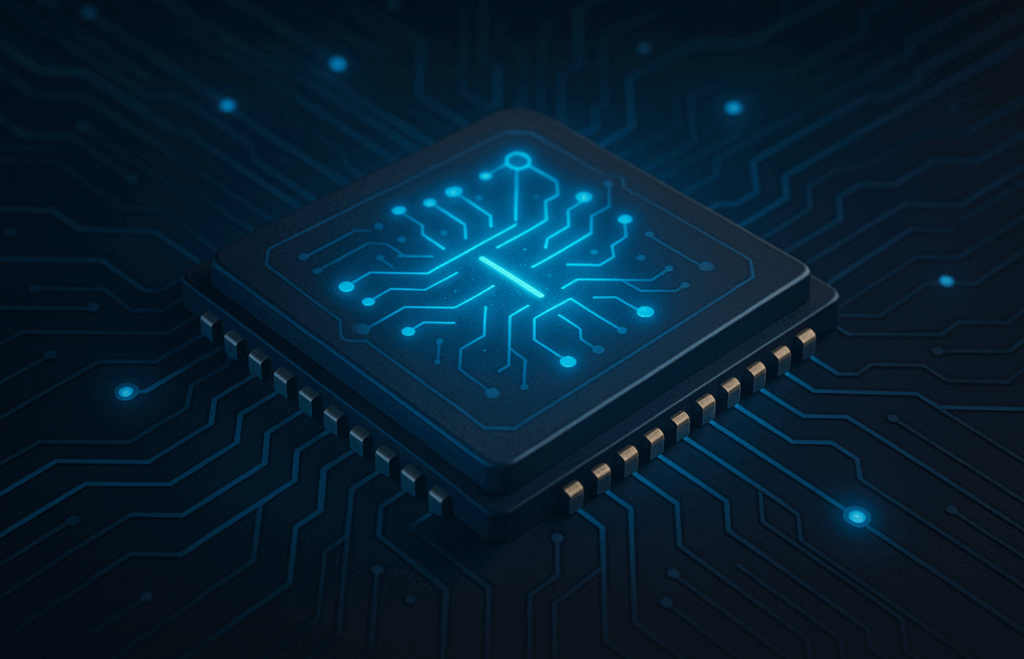Previous Post : 2025 U.S. Recession Investment Strategy: Where Smart Investors Are Putting Their Money
Introduction
In the rapidly evolving world of computing, two groundbreaking technologies are redefining the future: neuromorphic computing and quantum computing. These next-generation paradigms offer immense potential for solving some of the most complex challenges in science, industry, and daily life. As traditional computing approaches begin to hit performance and efficiency limits, neuromorphic and quantum computing rise as transformative solutions.

This article explores how these technologies work, their real-world applications, and what their continued development means for our digital future.
What is Neuromorphic Computing?
Neuromorphic computing is a cutting-edge field that mimics the neural architecture of the human brain. Unlike classical computing systems based on the von Neumann architecture—which separates memory and processing—neuromorphic systems integrate these components, enabling highly parallel, energy-efficient data processing.
Developed originally by researchers at Caltech in the 1980s, neuromorphic computing now leverages spiking neural networks (SNNs) and memristor-based hardware to replicate brain-like functions such as learning, perception, and adaptation.
Key Components of Neuromorphic Systems
To achieve brain-inspired computation, neuromorphic systems incorporate several specialized components:
- Artificial Neurons and Synapses: Mimic biological counterparts, enabling distributed processing and adaptive learning.
- Spiking Neural Networks (SNNs): Process information using spikes, or discrete events, emulating how biological neurons communicate.
- Memristors: Serve as non-volatile memory elements that retain information and support synaptic plasticity.
- Event-driven Architectures: Unlike clock-based systems, neuromorphic processors activate only when needed, minimizing energy consumption.
These components collectively make neuromorphic systems uniquely suited for low-power, real-time applications, such as edge computing and robotics.
Advantages of Neuromorphic Computing
Neuromorphic computing brings a host of advantages over traditional computing models:
⚡ Energy Efficiency
Because of their event-driven and parallel architecture, neuromorphic systems consume significantly less power, making them ideal for always-on, battery-powered devices like IoT sensors and mobile robots.
🧩 Real-Time Processing
Neuromorphic processors are capable of processing sensory data in real-time, similar to how the human brain handles visual or auditory inputs, making them well-suited for dynamic environments like autonomous driving.
🔁 Adaptive Learning
Thanks to synapse-like memory elements, these systems can learn and adapt on the fly, eliminating the need for large datasets or cloud-based training.
🌐 Scalability and Flexibility
Their decentralized design allows for scalable and modular architectures, meaning new “neural” units can be added without reengineering the whole system.
Real-World Applications of Neuromorphic Computing
Neuromorphic computing is already proving valuable in a variety of industries:
- Healthcare: Used in real-time monitoring devices for early detection of neurological disorders.
- Robotics: Enhances motion detection, obstacle avoidance, and sensory interpretation for autonomous agents.
- Smart Sensors: Found in surveillance and environmental monitoring systems that must react instantly to new inputs.
- Edge AI: Powers intelligent edge devices that require low-latency decision-making with minimal power usage.
Companies like Intel (Loihi) and IBM (TrueNorth) are leading the commercial race, developing neuromorphic chips that bridge the gap between AI theory and hardware performance.
What is Quantum Computing?
Quantum computing is a revolutionary paradigm that leverages the principles of quantum mechanics to process information in fundamentally different ways than classical computers. Instead of using binary bits (0s and 1s), quantum computers use qubits, which can exist in multiple states simultaneously due to a property called superposition.

These systems are not just faster; they are exponentially more powerful for specific types of problems—especially those involving massive datasets, optimization, or simulation.
Key Characteristics:
- Superposition: A qubit can be in multiple states at once.
- Entanglement: Qubits can be linked so that the state of one affects the other, even at a distance.
- Quantum Interference: Helps amplify correct results while canceling out errors during computation.
Quantum computing holds the potential to disrupt fields like cryptography, pharmaceutical research, and financial modeling.
How Quantum Bits (Qubits) Work
Unlike classical bits that can be either 0 or 1, qubits can exist in a combination of both states simultaneously. This ability arises from the quantum property of superposition.
🌀 Superposition
A qubit in superposition can represent both 0 and 1 at the same time, drastically increasing the computational space. For example, 3 classical bits can represent one of 8 combinations at a time, but 3 qubits can represent all 8 simultaneously.
🔗 Entanglement
Qubits can be entangled, meaning the state of one qubit is dependent on the state of another, even when separated by large distances. This unique correlation enables powerful parallelism and information transfer capabilities.
⏳ Decoherence and Error Correction
Quantum states are fragile and can be easily disrupted by environmental noise. Quantum error correction and decoherence management are active research areas aiming to make quantum systems stable and scalable.
Core Principles of Quantum Mechanics in Computing
Quantum computing is built upon several foundational principles of quantum mechanics:
- Wave-Particle Duality: Qubits behave both like particles and waves, enabling complex interference patterns used in computation.
- Measurement Collapse: Once a qubit is measured, it collapses from its superposition to a definite state, making result retrieval non-deterministic and probabilistic.
- Quantum Tunneling: Utilized in some quantum annealing systems (e.g., D-Wave), where particles bypass energy barriers, offering optimization advantages.
These principles allow quantum computers to explore vast solution spaces that classical computers would require millennia to search.
Advantages of Quantum Computing
Quantum computing offers transformative advantages, especially in areas where traditional computers struggle:
🚀 Exponential Speed
For certain problems like factoring large numbers, quantum algorithms such as Shor’s algorithm can solve them exponentially faster than classical counterparts.
🔍 Complex Simulations
Quantum systems can simulate molecular interactions with high precision, accelerating drug discovery, material science, and quantum chemistry.
🧮 Optimization
Quantum computers excel at solving combinatorial optimization problems common in logistics, supply chain management, and financial portfolio design.
🔐 Advanced Cryptography
While quantum computing poses a threat to traditional encryption, it also introduces quantum-safe cryptography methods for next-gen security systems.
Use Cases of Quantum Computing
Quantum computing is not just theoretical—several industries are already exploring and deploying it in real-world scenarios:
🧬 Healthcare and Pharmaceuticals
Quantum computers are used to simulate protein folding, optimize drug molecule configurations, and accelerate drug discovery pipelines.
💰 Finance and Investment
Financial institutions employ quantum algorithms to optimize portfolios, manage risk, and enhance fraud detection models.
🏭 Manufacturing and Supply Chain
Quantum computing helps solve logistics optimization problems like route planning, resource allocation, and minimizing production delays.
🔐 Cybersecurity
Quantum-resistant encryption protocols and post-quantum cryptography are being developed to prepare for the threat posed by quantum decryption capabilities.
🌐 Artificial Intelligence
Quantum-enhanced machine learning (QML) aims to speed up data classification, pattern recognition, and training of complex models.
Comparative Analysis: Neuromorphic vs Quantum
| Feature | Neuromorphic Computing | Quantum Computing |
|---|---|---|
| Core Inspiration | Human Brain | Quantum Mechanics |
| Main Advantage | Real-time, low-energy processing | Solving complex, multidimensional problems |
| Processing Units | Spiking neurons, synapses | Qubits |
| Application Fields | Robotics, IoT, edge AI | Finance, chemistry, cryptography |
| Commercial Availability | Emerging but more mature | Still in early development |
| Energy Efficiency | Very high | Requires cryogenic cooling (currently low) |
While both aim to overcome limitations of classical computing, they serve complementary purposes. Neuromorphic excels in real-time, low-power environments, whereas quantum computing shines in tackling abstract, large-scale mathematical problems.
Integration Potential in Hybrid Systems
The future may not be about choosing between neuromorphic or quantum—but rather integrating both:
- Quantum-Native Neuromorphic Chips: Experimental research is exploring quantum-inspired neural network architectures to speed up brain-like learning.
- Edge + Cloud Synergy: Neuromorphic systems could act as smart pre-processors on the edge, with quantum computers used for heavy-duty, back-end analysis in the cloud.
- AI-Enhanced Quantum Algorithms: Neuromorphic AI may optimize quantum circuit design, leading to more efficient quantum computing operations.
Combining these two advanced paradigms can bridge real-time responsiveness with high-dimensional problem-solving, unlocking unprecedented capabilities in autonomous systems, robotics, and scientific research.
Challenges and Limitations
Despite their promise, both neuromorphic and quantum computing face significant hurdles:
⚙️ Neuromorphic Computing Challenges
- Lack of Standardization: No unified hardware or software standards exist, complicating development and adoption.
- Limited Programming Tools: Most current AI frameworks are not optimized for event-driven architectures.
- Complexity in Scaling: Designing and managing large-scale spiking neural networks remains a research challenge.
🧊 Quantum Computing Challenges
- Decoherence: Qubits are highly sensitive to external noise, leading to computation errors.
- Error Correction: Quantum error correction requires significant overhead, limiting scalability.
- Cryogenic Requirements: Current systems require near-absolute-zero temperatures to function.
These barriers are gradually being addressed through academic research and commercial investment, but mainstream adoption may take years.
Future Outlook and Industry Trends
The next decade promises exciting developments in both technologies:
📈 Investment & Commercialization
Major tech players like IBM, Intel, NVIDIA, and Google are heavily investing in neuromorphic and quantum solutions, alongside startups and academic institutions.
📚 Education & Workforce
Universities and online platforms are launching new curricula in quantum and neuromorphic computing, preparing a workforce capable of leveraging these technologies.
🌍 Global Impact
From climate modeling to energy optimization, the integration of neuromorphic and quantum systems could profoundly influence global challenges, accelerating scientific breakthroughs and driving sustainable innovation.
Conclusion
Neuromorphic and quantum computing are not just buzzwords—they are technological frontiers that could redefine how we process information, make decisions, and innovate.
- Neuromorphic computing takes cues from the human brain to offer real-time, low-power AI solutions ideal for edge devices.
- Quantum computing, rooted in the mysteries of quantum physics, offers unmatched capabilities for solving multidimensional problems beyond the reach of classical systems.
Though each has distinct strengths and limitations, their convergence and hybridization may unlock a future where machines not only compute faster—but also think and adapt like humans.
Together, these innovations represent a quantum leap toward the next evolution of intelligent computing.
Frequently Asked Questions (FAQs)
1. What is the main difference between neuromorphic computing and quantum computing?
Neuromorphic computing mimics the structure and function of the human brain to process data in real-time with low power consumption. In contrast, quantum computing uses the principles of quantum mechanics, such as superposition and entanglement, to perform computations that are infeasible for classical computers.
2. What industries are likely to benefit most from neuromorphic computing?
Industries such as robotics, healthcare, autonomous vehicles, and IoT stand to benefit significantly due to neuromorphic computing’s low latency and energy-efficient architecture. It’s particularly useful for real-time decision-making at the edge.
3. Is quantum computing available for commercial use today?
Quantum computing is still in its early developmental stage, with limited commercial availability. Companies like IBM, Google, and D-Wave offer quantum cloud platforms, but widespread, practical applications are still a few years away.
4. Can neuromorphic and quantum computing be integrated?
Yes. Research is actively exploring hybrid systems where neuromorphic chips handle real-time, local data processing, while quantum processors tackle high-complexity, back-end analysis. This integration could enhance everything from robotics to advanced AI systems.
5. What are the current limitations of quantum computing?
Quantum computing faces several technical challenges, including qubit decoherence, error correction, cryogenic operation requirements, and limited algorithm maturity. These hurdles are significant but are being addressed through rapid advancements in research and hardware engineering.

